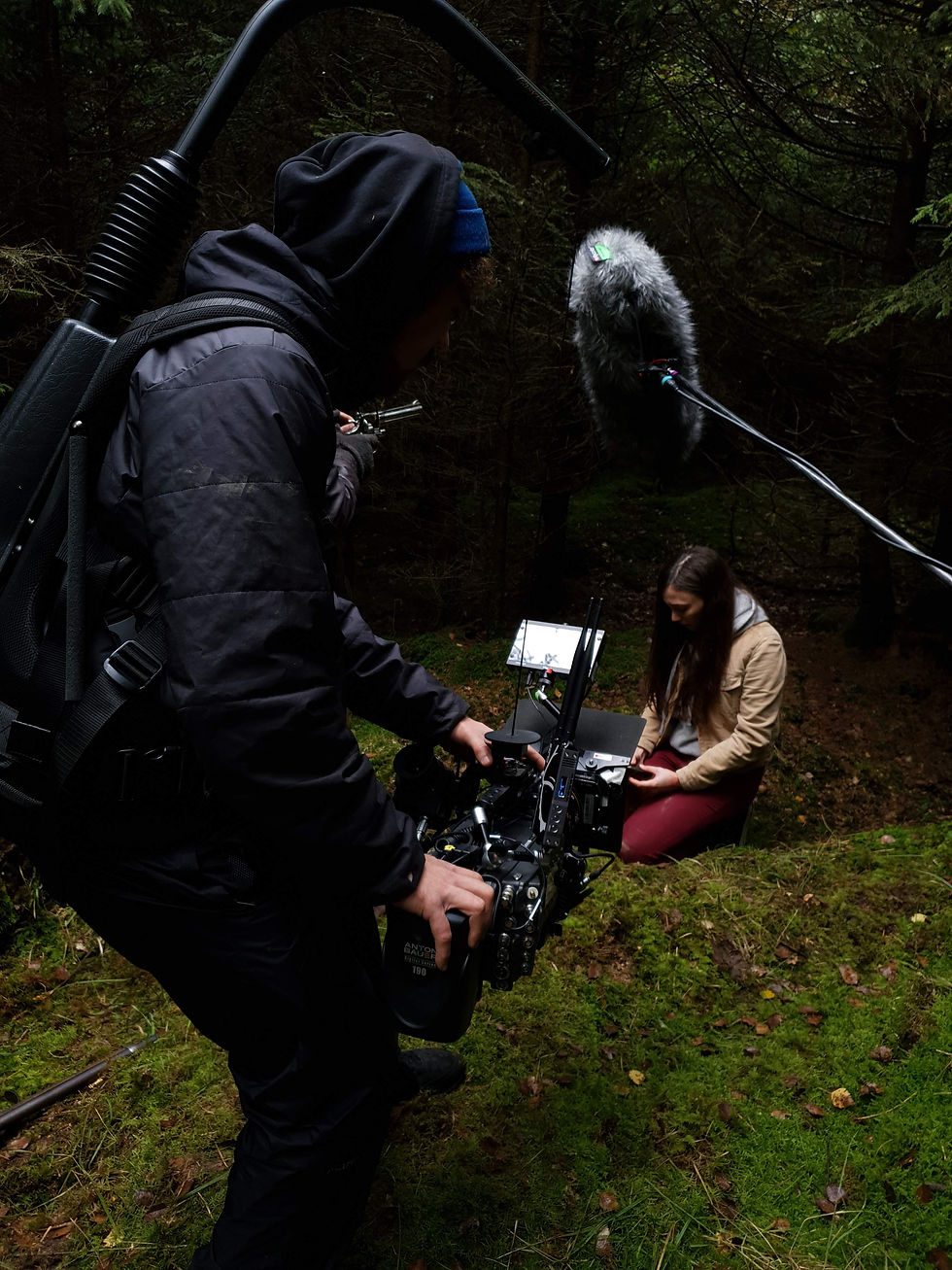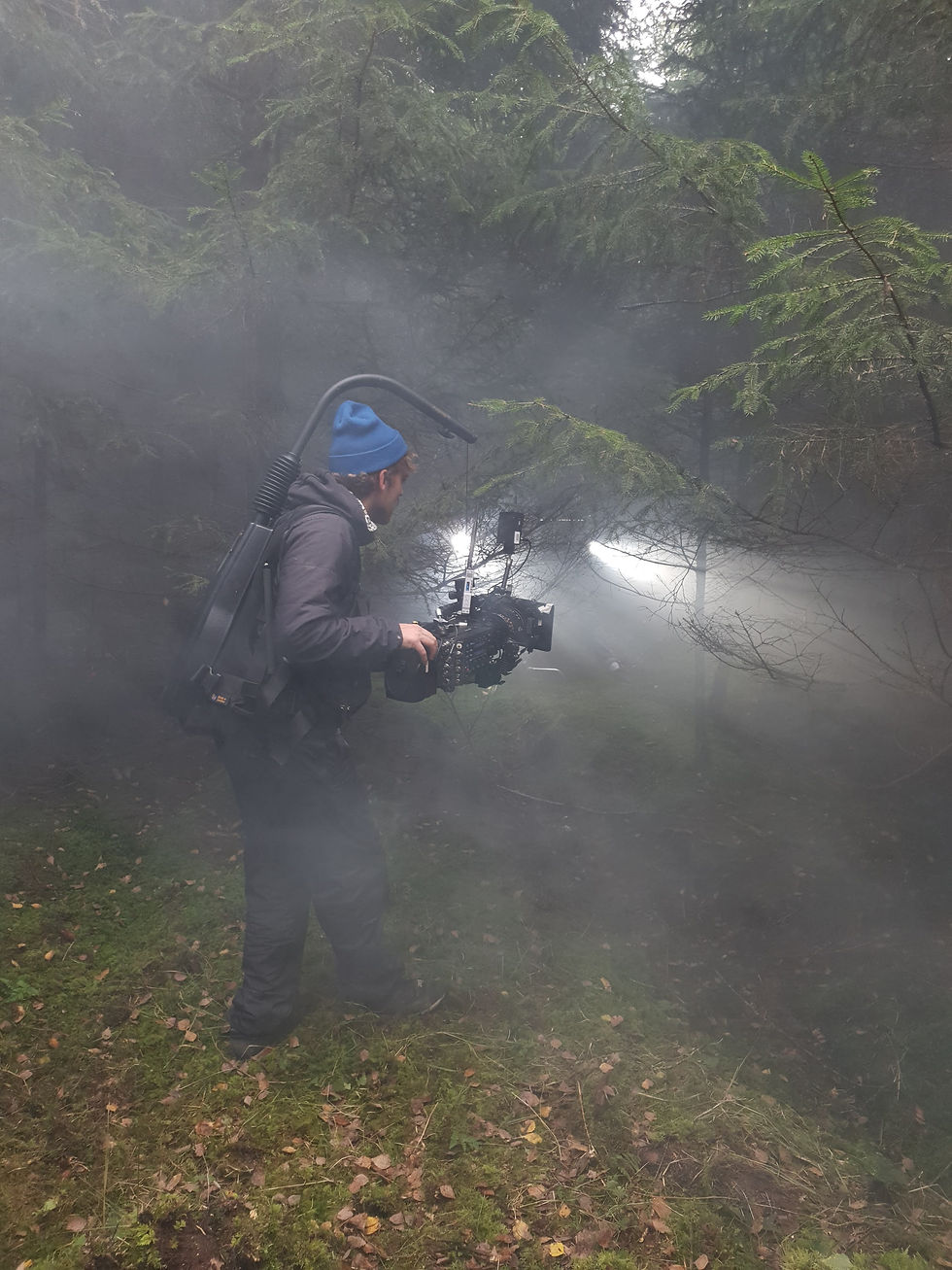Philipp Hartinger | Director
- DwarfConnection
- 4. Feb. 2022
- 4 Min. Lesezeit
Aktualisiert: 10. März 2022
In October 2019 German film student Philipp Hartinger and his team shot a short movie in the woods of Bavaria. We helped them out with some gear and talked to him about this piece of art.

Please tell us a little about your project and your team.
We produced a short film as part of our film studies. It was the largest project of this kind we had undertaken so far, and one of the first projects for which I both directed and wrote the script. We are four Bachelor students from the Deggendorf Institute of Technology. Lina Schmidt is the producer, Maxi Gold is the editor and colourist, Manuel Emrich is the sound recordist and mixer and I am the writer and director. We managed to get the project off the ground with nine volunteers and a number of supporters. Our cameraman, Adrian Huber, came from Stuttgart. The camera assistants came from Hamburg, and the rest came from Deggendorf and surrounding areas.

It is a mystery film inspired by Greek mythology and records of near-death experiences.
The logline was: Awakened by a voice from a radio, Hannah finds herself on an island in a river. As yet, she does not know that her life depends on the mysterious ferryman who will only carry her across the river in return for a gold coin.
Where did the idea come from? A rather strange train of thought led up to it.
My starting point was the idea of telling a narrative in reverse order, although the scenes themselves progress in a linear fashion. It is a similarly anachronistic approach to the one used by Christopher Nolan in his film Memento.
The first version of the idea involved a poacher carrying a dead animal into a clearing in a forest, shooting it with his rifle and the animal then running out of the forest very much alive.
Inspired by the myth of the ferryman Charon, who carries the souls of the dead across the underworld river Styx in return for an obelus, the idea then developed further.
A number of issues came up during the development process.
How does one reach the river Styx? Is one already dead, or merely unconscious? If one is unconscious, can one hear sounds from the real world? What happens if one dies while in this parallel world?
The core of the story then became that our protagonist is unconscious but is determined to escape the unfortunate situation, encouraged by what someone close to her is saying. She meets the ferryman Charon, who refuses to take her across the river because she cannot pay the obelus. She attempts to find a gold coin or some other means of escape but fails. Charon eventually shoots her. As a result, she regains consciousness and doesn't die, because she resisted the ferryman and was therefore not carried into the world of the dead.

What are the key elements that define the style of the film?
We made sure that we established a dark, gloomy atmosphere in the very first scene. We also placed little titbits of information throughout the film that only make sense when the story is resolved at the end. There are repeated moments where things from the real world reach Hannah, increasing the sense that something is not quite right.
During the editing process we decided to use hard cuts to a black screen to separate individual narratives and locations and create vignettes of a dream world.
What challenges did you face before and during production?
To sum it up: financing.
We had to arrange the team of volunteers, their transport, their accommodation and their food. Then there was the equipment, which you were kind enough to help us out with. We had six different equipment rental companies which all contributed and made it possible for us to film with an Alexa Plus 4:3 and Atlas Orion lenses. I have to admit I was surprised at what we were given access to, all thanks to the goodwill of our supporters.
Finding actors was an issue, as all the acting schools were off on vacation. Many of our requests were only answered after shooting had completed. In addition, we only had a small portfolio, which made it more difficult to convince actors to participate. We had a small pool to choose from, but we were lucky enough to find two great actors.
Your set was in a forest and you faced difficult weather conditions. How was it filming in nature and in rain?
Actually, the weather was pretty ideal for our purposes. It was cloudy most of the time, so we didn't have to worry about lighting continuity. The occasional ray of sun might have been welcome, but you can't have everything. We had two days of rain, but fortunately we were quite well-prepared because we actually expected more rain in October. After five days of filming I was thoroughly sick of the forest and of nature in general. We're going to shoot the next film indoors - I hope.

Finally, we'd like to know: what drew you to filmmaking?
One attraction is undoubtedly the fact that you can't get much done on your own. Every film requires a team that supports the project. Everybody functions as a small cog in a machine that eventually creates the experience on the big screen. Another great aspect is that the work is very varied and is both my job and my hobby. Even the most irritating, boring or difficult tasks seem half as bad when you know that the final result will be a film.



Kommentare